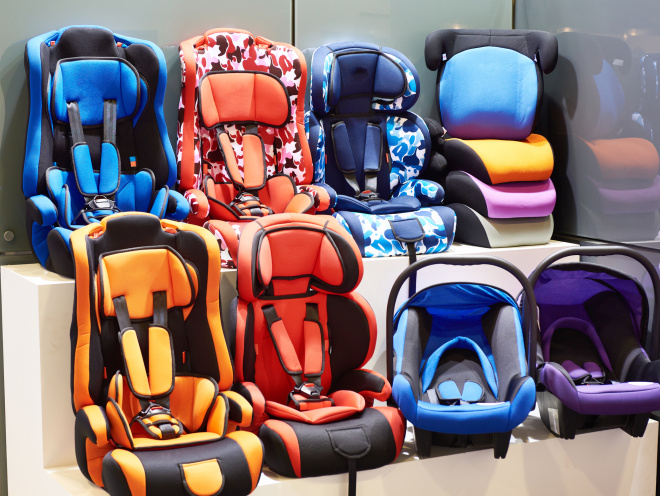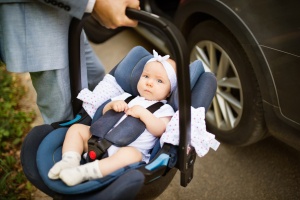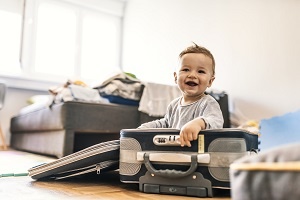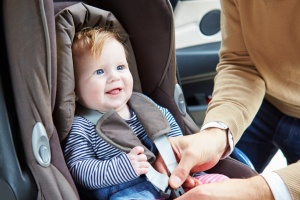With so many types of baby or child car seats available, buying one can be confusing. Here’s a handy checklist to help you decide which one to choose.
Add the huge choice of car seats to the large load of legal and safety information, and no wonder choosing a car seat is daunting. Yet choosing the right child car seat and fitting it properly is crucial to keeping your child is safe in the car. So you’ll want to take your time and consider all your options.
Here are some helpful tips on choosing the right car seat for you.
1. Which car?
Which car or cars do you plan to use the seat in? This could include your own car, plus grandparents' or childminders' cars. RoSPA have a compatibility list so you can check which car seats are compatible with particular cars.
2. Compare car seats
Make a shortlist of the car seats you like. Talk to friends and family with children and ask if you can take a look at any child car seats they have. Ask them what the benefits are of the type they have chosen, as this could give you an idea of what you like and what’s important to you.
You can also look up features of specific car seats and read safety reviews of particular models online to help you make a shortlist.
There may be a particular feature you find you like or need, or your budget might be a significant factor to consider in your decision.
It’s best to actually try a few car seats in your car, if you can, before making the final decision to buy one.
This gives you the chance to compare how well it fits as well as the ease of putting it in and taking it out of your car.
Newborn babies will need a rear-facing car seat to begin with (NHS, 2019). All babies start with a rear-facing infant car seat because travelling backwards is an important part of preventing injuries in a crash (RoSPA, no date a).
3. Check the details
Make sure the car seat you’re buying is the right size or type for your child’s current height and weight. RoSPA’s car seat table is a useful guide.
All car seats should be EU approved – look for the ‘E’ mark label on the seat. Many modern cars have built-in isofix connectors. Isofix is designed to make installing your car seat quick and easy. So it’s worth checking for the isofix connectors in your car – they might be hidden in the cracks between the padding of your car seats (NHS, 2019).
4. Can you put a child car seat in the front?
It’s best to put the child car seat on a rear seat of your car. But if you will need to use a front seat, you must disable any airbag. So check your car's instructions for how to do this.
For further information about putting a child car seat in the front, see our article Fitting a baby's car seat.
5. Try before you buy
Some retailers have trained staff in their store who will be happy to help you fit and test a car seat in your car. You may need to ring the store in advance and pre-book an appointment for this service.
6. Install it and test it
Even if your baby hasn’t been born yet, it’s a good idea to practise fitting the seat beforehand. You could use a teddy or a bag of flour so you’re confident with how to tighten the straps. If you're planning to return home by car from where you gave birth, remember that your carers will want to be reassured that you have a child seat.
Practise putting the car seat in, adjusting it and taking it out again. That way you’ll be confident and comfortable with how it all works.
Second-hand car seats
Avoid buying a second-hand car seat (RoSPA, no date b). This is because it could have been damaged in an accident and might not have all its parts, including important fitting and safety instructions. Other reasons are that it may not be the most up to date, safest or most user-friendly model and it might not fit in your car properly (NHS, 2019).
Only use a second-hand car seat if you really must and you know:
- it’s from close family or friends
- its history and know it hasn’t been in a car accident that could have damaged it and rendered it unsafe to use
- the manufacturer's advice about how long the car seat can be used before it needs to be discarded
- the seat is appropriate for the weight and height of your child
- the seat can be fitted securely in your car
- the seat meets current regulations.
(RoSPA, no date b)
Next steps
Choosing a car seat can take time. If you are still unsure about which car seat to go for it is worth reading our guide to car seats or visiting the Royal Society for Prevention of Accidents (RoSPA)’s website.
This page was last reviewed in June 2022.
Further information
Our support line offers practical and emotional support with feeding your baby and general enquiries for parents, members and volunteers: 0300 330 0700.
Make friends with other parents-to-be and new parents in your local area for support and friendship by seeing what NCT activities are happening nearby.
More information is available from the Royal Society for Prevention of Accidents (RoSPA) or call RoSPA’s free life line 0808 801 0822.
NHS. (2019) Choosing a baby car seat. Available at: https://www.nhs.uk/conditions/pregnancy-and-baby/child-car-seats-and-child-car-safety/ [Accessed 2nd June 2022].
RoSPA. (no date a) Choosing and using rearward facing child car seats. Available at: https://www.childcarseats.org.uk/types-of-seat/rearward-facing-baby-sea… [Accessed 8th June 2022].
RoSPA. (no date b) Second hand child seats. Available at: https://www.childcarseats.org.uk/choosing-using/second-hand-child-seats/ [Accessed 2nd June 2022].








